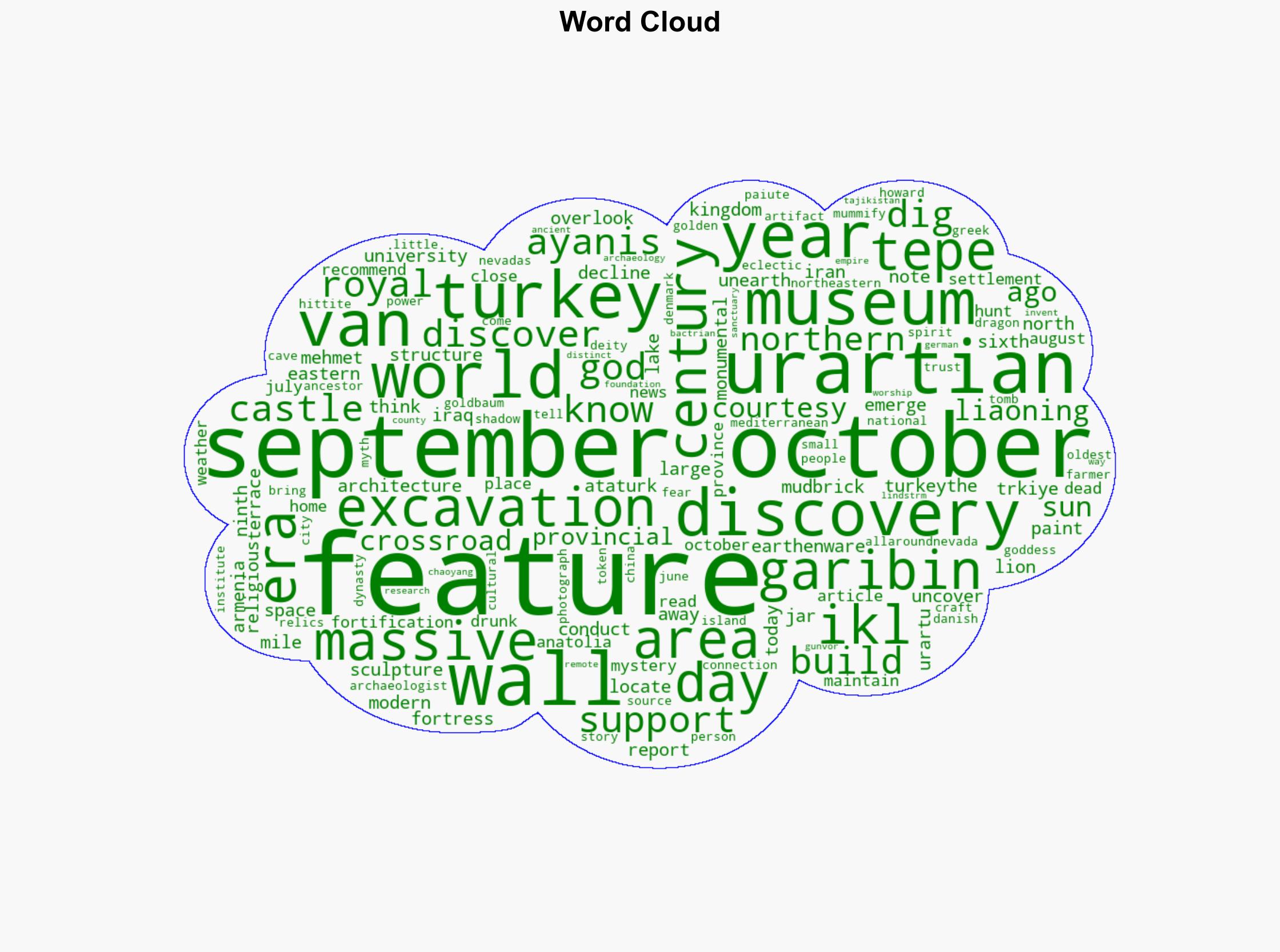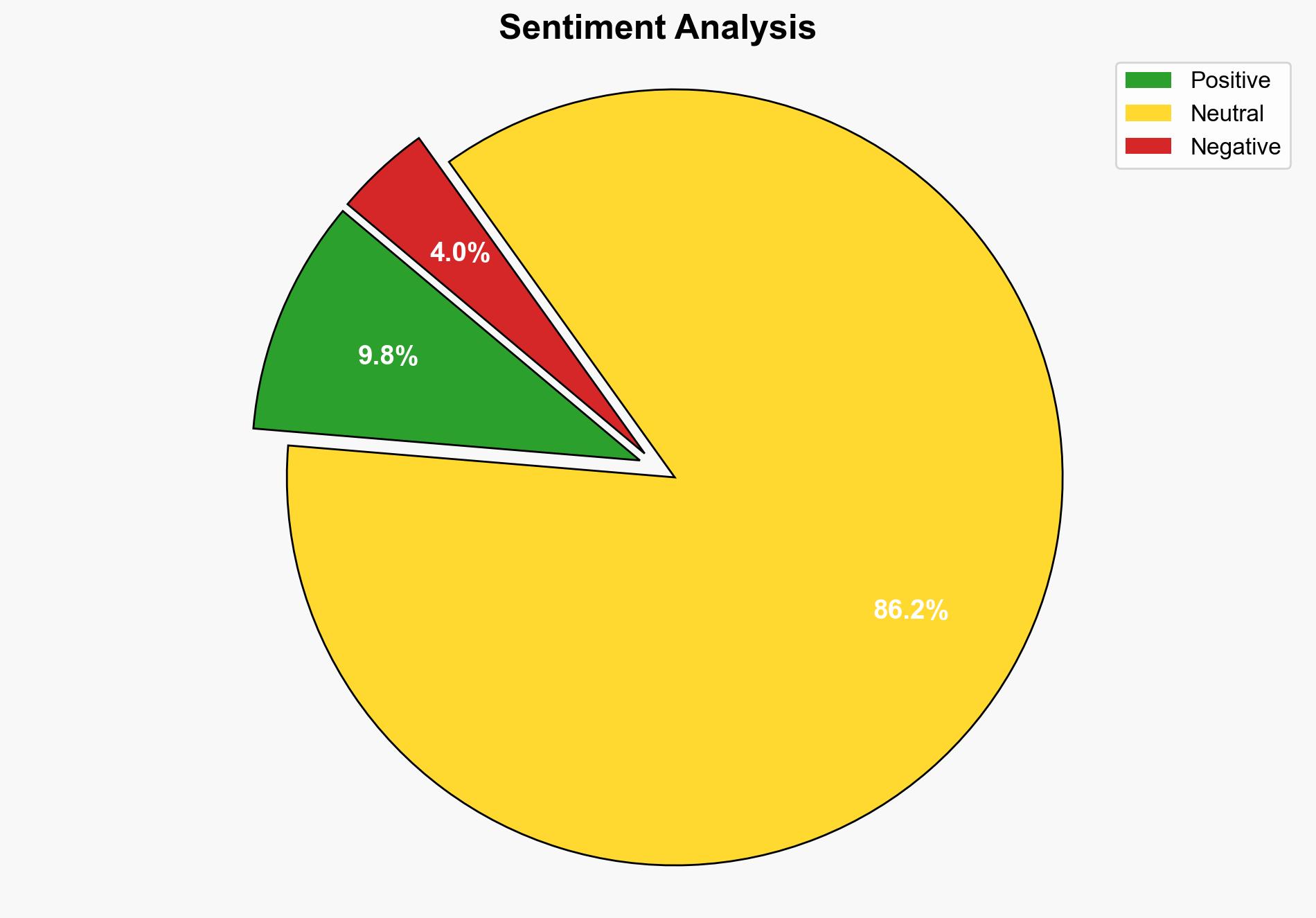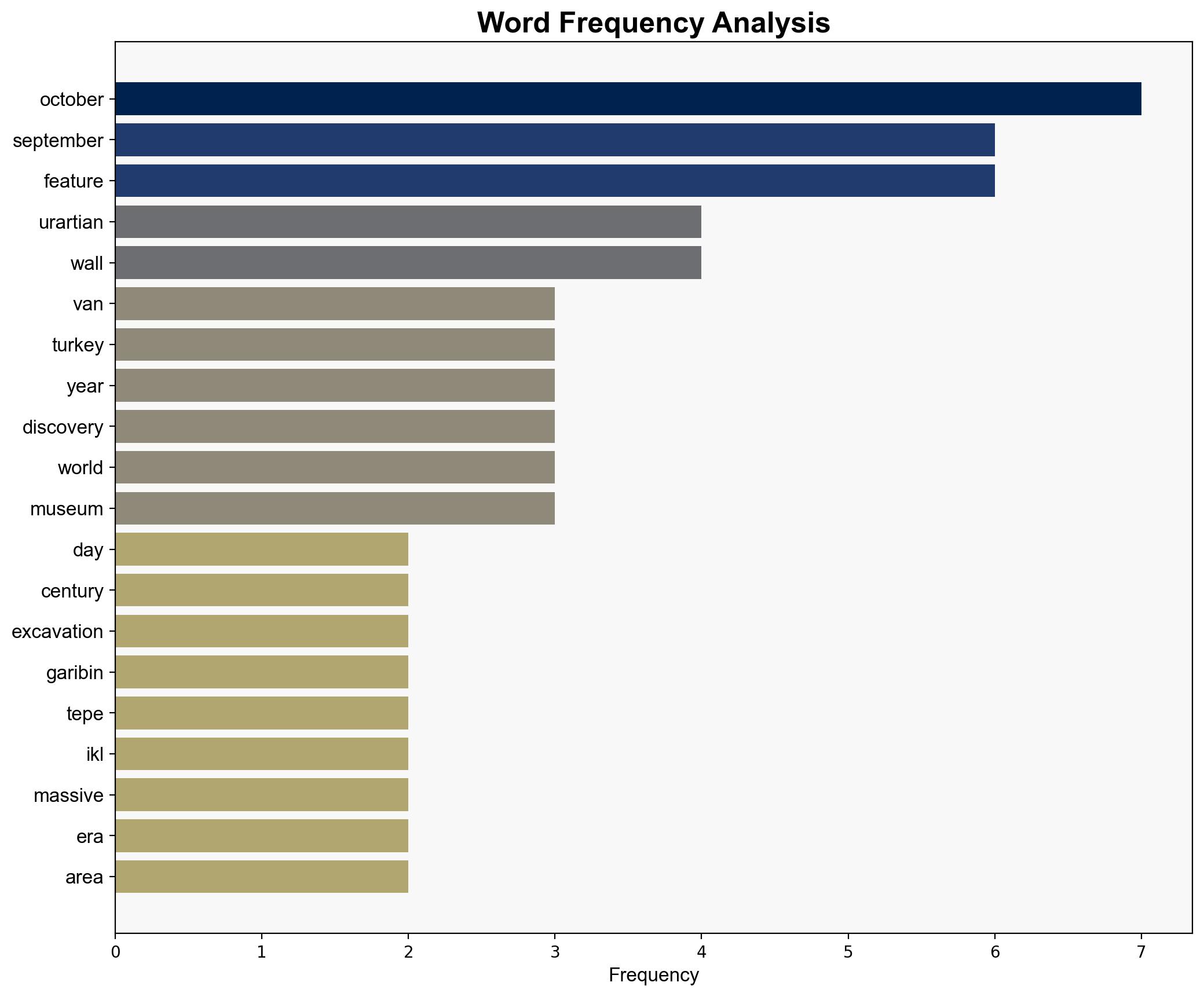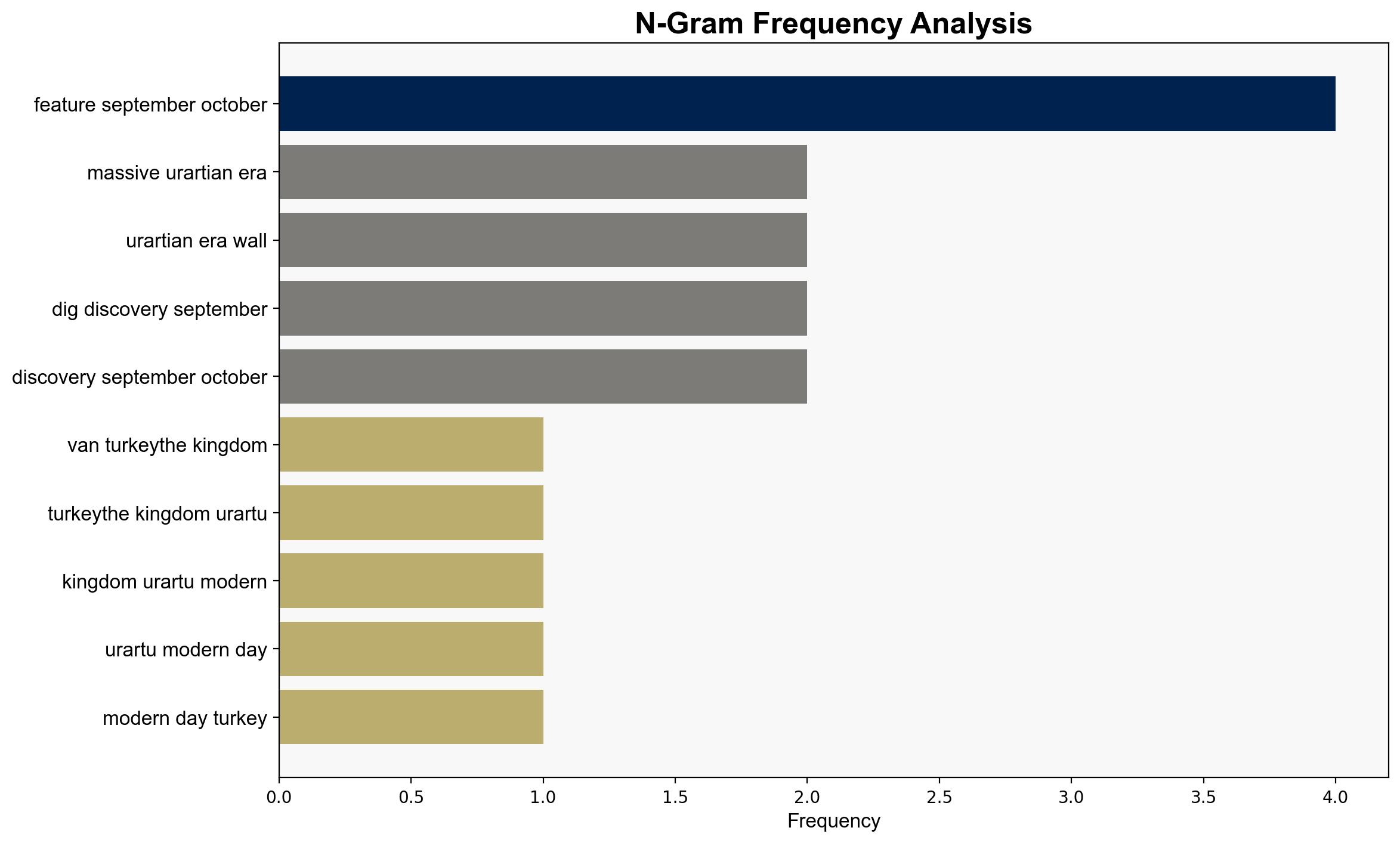Why Were These Massive Urartian-Era Walls Built – Archaeology
Published on: 2025-10-07
Intelligence Report: Why Were These Massive Urartian-Era Walls Built – Archaeology
1. BLUF (Bottom Line Up Front)
The most supported hypothesis is that the massive Urartian-era walls were constructed as fortifications to protect a significant religious or royal site, possibly linked to the nearby Ayanis Castle. Confidence in this hypothesis is moderate due to the lack of direct evidence linking the walls to specific historical events or purposes. Recommended action includes further archaeological investigation and comparative analysis with other Urartian sites to refine understanding.
2. Competing Hypotheses
1. **Fortification Hypothesis**: The walls were built as defensive structures to protect a significant site, possibly a religious or royal space, given their proximity to Ayanis Castle and the presence of monumental architecture.
2. **Territorial or Symbolic Hypothesis**: The walls served as territorial markers or symbols of power and influence, rather than purely defensive structures, reflecting the Urartian kingdom’s reach and cultural significance.
Using the Analysis of Competing Hypotheses (ACH) 2.0, the Fortification Hypothesis is better supported due to the strategic location and architectural features suggestive of defense.
3. Key Assumptions and Red Flags
– **Assumptions**: It is assumed that the proximity to Ayanis Castle implies a direct relationship, and that monumental architecture indicates a defensive purpose.
– **Red Flags**: Lack of direct evidence linking the walls to specific historical events or purposes. The possibility of alternative explanations for the walls’ construction, such as cultural or symbolic reasons, is not fully explored.
– **Blind Spots**: Limited archaeological data from the site may obscure other potential uses or significances of the walls.
4. Implications and Strategic Risks
– **Cultural and Historical Understanding**: Misinterpretation of the walls’ purpose could lead to skewed perceptions of Urartian history and influence.
– **Geopolitical Dimensions**: Understanding the historical significance of the Urartian kingdom could impact regional cultural heritage claims and tourism strategies.
– **Escalation Scenarios**: None identified, as the primary risks are academic and cultural rather than geopolitical or economic.
5. Recommendations and Outlook
- Conduct further archaeological excavations and comparative studies with other Urartian sites to gather more evidence.
- Engage in interdisciplinary research combining archaeology, history, and cultural studies to explore alternative hypotheses.
- Scenario Projections:
- **Best Case**: Discovery of artifacts or inscriptions that clarify the walls’ purpose, enhancing historical understanding.
- **Worst Case**: Continued ambiguity leading to contested interpretations and potential cultural heritage disputes.
- **Most Likely**: Incremental findings that gradually build a clearer picture of the walls’ significance.
6. Key Individuals and Entities
– Mehmet Ikl: Conducted the excavation at Garibin Tepe.
7. Thematic Tags
cultural heritage, archaeology, historical analysis, regional focus




